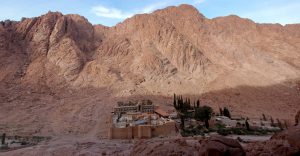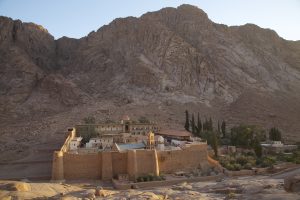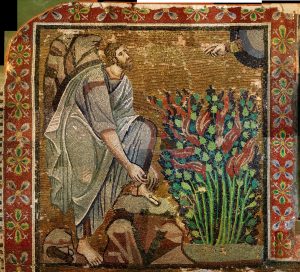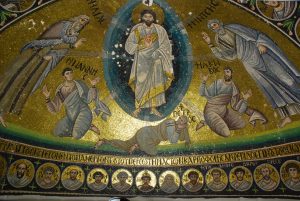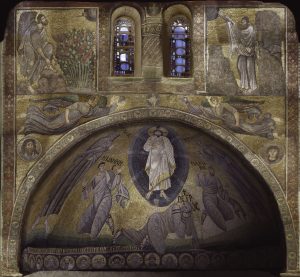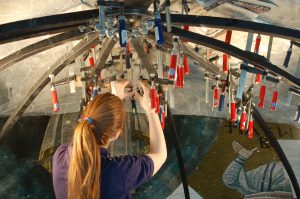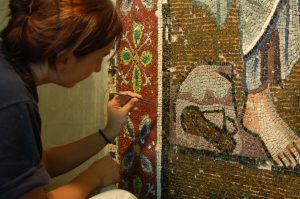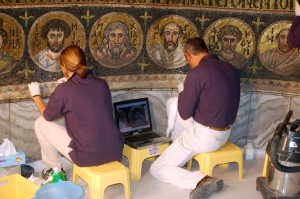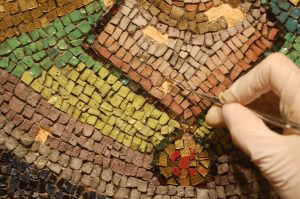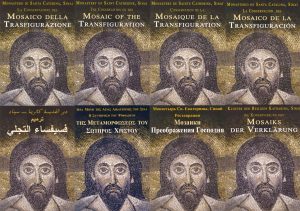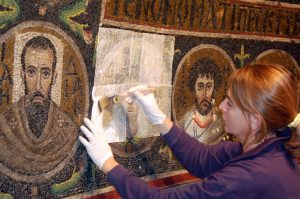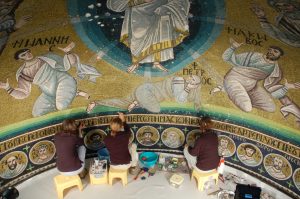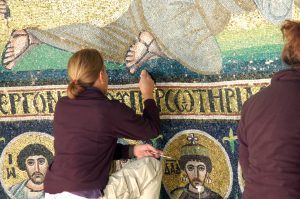The Mosaic of the Transfiguration – St. Catherine
Although not all academics agree on the mosaic’s dating, most of them tend to attribute this extraordinary work to the sixth century A.D. and thus to the same period as the construction of the church it adorns. Other major Justinian-era mosaics were done in Italy at the same time: San Vitale and Sant’Apollinare in Classe, both in Ravenna.
The apse mosaic depicts the New Testament episode in which Christ reveals his dual nature to his first three apostles: Peter, James and John. Witnessing the divinity of Christ are the prophets Elias and Moses.
The Christ figure dominates the scene in the central part of the apsidal curve against a dazzling gold background. A divine light radiates from Christ in eight rays made of gold and silver tesserae; it strikes the Prophets and Apostles at each side. Peter, transfixed by the vision, lies prone at Christ’s feet. To the proper left of Christ, John is on his knees with his arms spread wide to express his wonder, and the prophet Elias stands at his side. On the right, the same disposition of figures – a seemingly deliberate mirror image – involves the apostle James and the prophet Moses.
The scene is framed below by a strip of 19 medallions with busts of the prophets, the abbot Longino on the right side and the deacon John at the far left. The medallion frame continues in the upper part of the apse with busts of the apostles and evangelists, and culminates in a central halo with an equilateral cross.
In the triumphal arch above the apse two mirror-image of angels with rods and globes with crosses, converge in flight on a golden background towards the center of the arch where the Lamb is depicted in a halo in front of the cross.
To the right and left, beneath the angels, two other medallions depict, respectively, the busts of the Virgin and St. John the Baptist, framed against backgrounds of silver tesserae.
In the upper part are depicted the scenes of Moses receiving the Tables of the Law on Mount Sinai, and the episode of Moses before the Burning Bush, in the process of removing his sandals.

